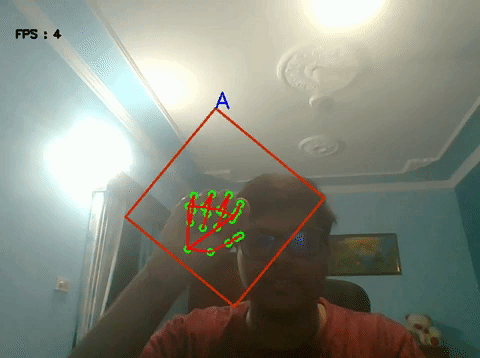Hand Gesture Recognition
August 24, 2020
In this article, I will elaborate on the method used by me to recognize hand gesture and it’s accuracy. For achieving this, I created the Hand Gesture Recognition component. This component achieves the final and the most important objective of my Google Summer of Code project. I have already talked about the dataset creation, different methods in the components and purpose of each in my last blog.
Since this is my last blog, I will also mention future work that can be done to improve the component.
Method Used
I used Support Vector Machine (SVM) to recognize gestures in this component which is a supervised learning technique. I used one vs one technique of the SVM, in which, for every pair of classes a classifier is trained that maximize the distance of data points from the hyperplane separating them. All these hyperplanes are then used to predict the class for the new data.
I decided to use SVMs because of following reasons:
- Training and testing SVM is faster, so we can train for custom classes on every run.
- SVM is effective in high dimensional spaces. Hand Keypoints on which we are training are 42 dimensional.
- SVM is memory efficient, so fewer resources are required.
- Unlike in neural networks, SVM is not solved for local optima.
- Risk of overfitting is very less in SVMs
I also considered other techniques like CNN (High training time so can’t train for custom classes every time), KNN (Can be trained and tested in real-time, but accuracy was low compared to SVM).
Future Work
In this project, I have created a basic structure and properly functioning components for gesture recognition in real-time. But some improvements can be made, which are mentioned below:
- Accuracy of gesture recognition can be improved by using a larger dataset of keypoints
- In this project scope of gestures was limited to ASL alphabets, in the future, we can improve this component to work for a wider range of gestures like ASL words. Also, since ASL alphabets are single-handed, we can work on two-handed sign languages like British Sign language.
Project Demo
I have made a video demo explaining the steps to run the component.
Youtube Link: https://youtu.be/1JFvr_lMYTo

For experiencing this yourself, visit handGestureClient Component and follow the the given instructions.
Thanking Note
The whole journey of Google Summer of Code has been really exciting. It was a brilliant learning experience as I was working on the problem of this kind for the first time. There were some challenges I faced and it was fun solving them.
I would like to thank Aditya Aggarwal, Francisco Andrés, Esteban Martinena Guerrero, and Pilar Bachiller for helping me overcome challenges and giving constructive suggestions throughout the project.
Kanav Gupta
